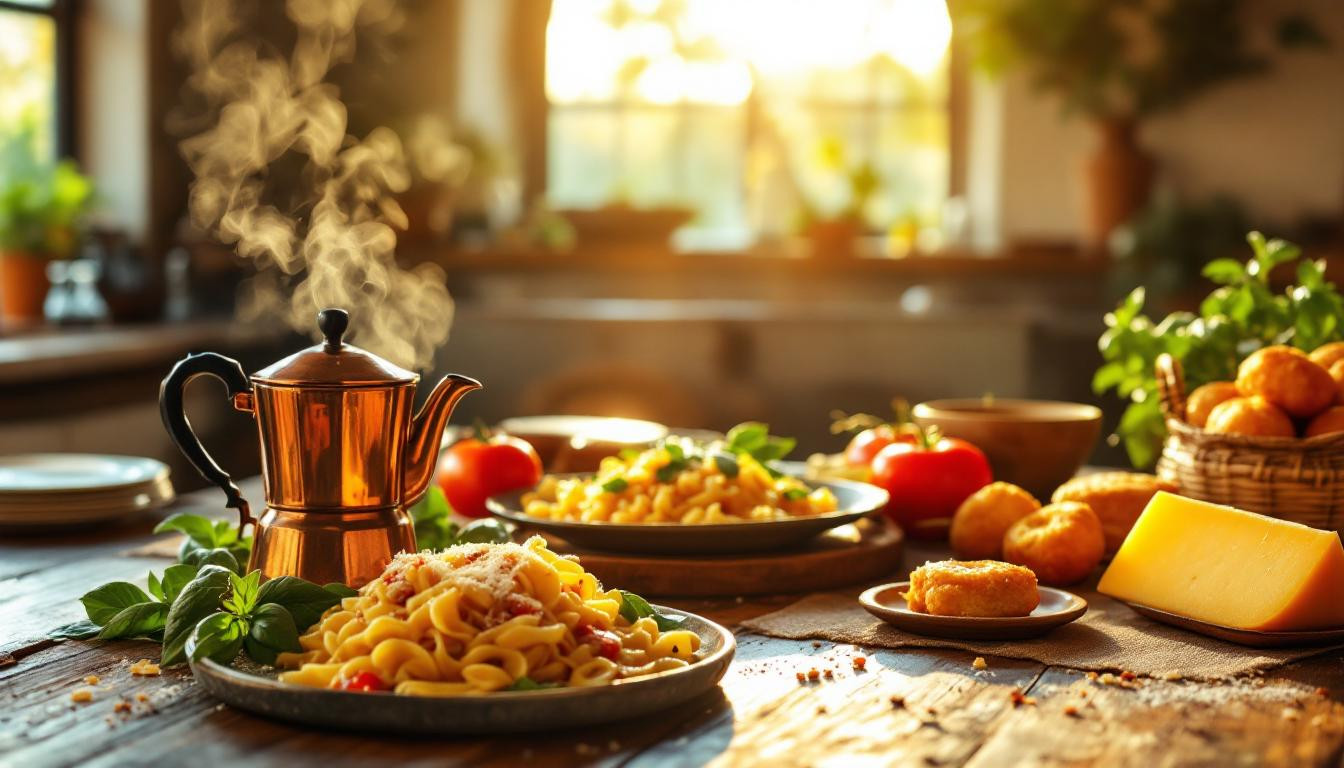The iconic red-checkered tablecloths, the aromatic waft of basil and garlic, the comforting bowl of spaghetti and meatballs – these images have become synonymous with “Italian cuisine” worldwide. But what if I told you that Italian cuisine, as most people understand it, doesn’t actually exist? The reality behind what you’re ordering at your favorite Italian restaurant might surprise you.
The myth of a unified Italian culinary tradition
Italy wasn’t unified as a country until 1861, meaning that for centuries, what we now call Italy consisted of separate regions with distinct culinary identities. Professor Elena Romano, a food historian at the University of Bologna, explains: “What foreigners call ‘Italian cuisine’ is actually a mosaic of regional cooking traditions that evolved separately over centuries. Even today, an Italian identifies first with their regional cuisine, then with Italian food as a concept.”
This regional diversity explains why a Sicilian might be unfamiliar with dishes from Lombardy, despite both being “Italian.” Many Italians would argue that there are at least 20 different Italian cuisines – one for each region.
Your “traditional” Italian favorites aren’t what you think
Many dishes considered quintessentially Italian are either recent inventions or dramatically different from their authentic counterparts:
- Spaghetti and meatballs – an American-Italian creation
- Fettuccine Alfredo – largely unknown in Italy outside tourist restaurants
- Pepperoni pizza – “pepperoni” in Italy actually means bell peppers
- Garlic bread – not traditionally Italian
Dr. Alberto Grandi, author of “Denominazione di Origine Inventata,” controversially points out: “Even pizza as we know it today was largely unknown in Italy before the mid-20th century, and carbonara may have American influences brought to Italy after World War II.”
The truth behind your “authentic” Italian meal
When I replaced my regular pasta meals with region-specific Italian dishes, I discovered that authentic Italian cooking is like a carefully tended garden – it focuses on simplicity, seasonality, and quality ingredients rather than elaborate combinations or heavy sauces.
The ingredient revolution you never knew about
Many ingredients we associate with Italian cooking weren’t always part of the culinary landscape:
- Tomatoes – introduced from the Americas in the 16th century
- Pasta – likely adapted from Asian noodles via Arab traders
- Coffee – became popular in Italy only in the 17th century
Studies show that olive oil consumption, a cornerstone of Italian cooking, varies dramatically by region, with northern areas traditionally using more butter and lard.
The health paradox of real Italian eating
The traditional eating patterns in Italy are like a well-conducted symphony – balanced, harmonious, and nourishing. Unlike American-Italian cuisine with its oversized portions and heavy sauces, authentic regional Italian cooking aligns closely with the Mediterranean diet, which research consistently links to better heart health and longevity.
When reducing meat consumption in favor of plant-based Italian dishes, many experience significant health benefits – just as Italians have for generations.
How cheese transforms Italian regional cuisine
Regional cheese varieties affect digestion differently and create distinct flavor profiles in dishes. Northern regions favor aged cow’s milk cheeses like Parmigiano-Reggiano, while southern regions often use sheep and goat cheeses with tangier profiles.
Protein choices that define regional differences
Just as comparing nutritional profiles of different foods reveals surprising differences, examining protein sources across Italian regions shows stunning variety. Coastal regions embrace seafood, mountain areas favor preserved meats, and pastoral regions highlight cheeses and lamb.
What should we call “Italian food” then?
Rather than a single cuisine, think of Italian food as a diverse family – related but distinct members sharing core values of simplicity, quality ingredients, and cultural heritage. Understanding this transforms not just how we eat Italian food, but how we appreciate its true essence: regional diversity united by a passion for quality ingredients and convivial dining.
